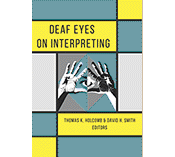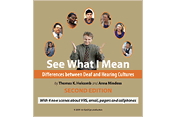Tom:
These days on YouTube, you can find many attempts to explain differences between Deaf culture and hearing culture. One good example is the work of a CODA named Will (CODA8810). He provides several episodes, which although exaggerated, illustrate how Deaf people can behave very differently from hearing people. One of his scenes depicts graphically the openness and the etiquette related to information sharing regarding what goes on in the bathroom. This kind of openness has long been the subject of debates among Deaf people as to the appropriateness of such disclosures. You need to watch Will’s 3 short scenes on YouTube: to see for yourself. So, does this truly fit the definition of Deaf Culture?
As discussed in the book Introduction to American Deaf Culture, cultural behaviors can be categorized into three categories – explicit, implicit, and emblematic. Some behaviors are explicitly regulated through laws or policies. For example, the government determines the legal age for getting a driver’s license or drinking alcohol beverages. The legal age for these actions varies from culture to culture. Other behaviors are implicitly understood. Rather than being regulated by laws or policies, they are generally accepted and practiced by the community members. For example, tipping rules also vary from culture to culture. Here in American restaurants, a tip of 15% to 20% of the bill is expected, but not mandated by law. The final category is where behaviors are emblematic of the culture but not necessarily practiced by most members of the community. For example, foul language is often used in American movies, giving an impression to people throughout the world that such behavior is typical of Americans. While most Americans may not themselves swear as much as certain characters in movies, foul language has become emblematic of American culture.
In the case of Deaf culture, etiquette associated with information sharing about bathroom behavior or personal ailments has been long debated among Deaf people. Letting others know where you are going when you leave the room is expected of Deaf people, even if the bathroom is your destination. Adding a vivid description of what transpired in the bathroom is not. Yet, it is not that unusual to be at the receiving end of a detailed description of a difficult bowel movement or colorful vomit. This openness can be considered emblematic of Deaf culture…that is it is not customary or expected of Deaf people to be graphic, yet such descriptions are not that unusual within the Deaf community. CODA Will makes this point in his another YouTube presentation — What do you think?







